Who knew a simple question—can a male give a female a massage?—could trigger so many opinions, blushes, and even full-on debates? The answer isn’t a simple yes or no. It’s tied to comfort, trust, personal boundaries, and sometimes, local tradition. In Dubai, where cultural expectations and modern habits entwine like a fancy Turkish towel, this question pops up in spas, homes, and casual conversations. So let’s talk about what really goes on when a man massages a woman: what’s respectful, what’s awkward, and how to make the experience beneficial for everyone involved.
Can a Male Give a Female a Massage?: Your Comprehensive Guide
Let’s put the main question right up front: male giving female massage is absolutely possible—both in personal and professional settings. Massage has long been a source of relief, connection, and even fun. But there’s plenty to talk about—how different cultures see things, ways to avoid misunderstandings, and simple tips so everyone feels relaxed, not stressed. This guide unpacks the cultural roots, crucial etiquette, communication basics, and practical strategies, so you’re armed with knowledge and ready for that next spa appointment or cozy night in.
Understanding the Basics of Male Giving Female Massage
Origins and History
Massage therapy appears in ancient Chinese, Egyptian, Indian, and Greek traditions—with records stretching back over 3,000 years. Traditionally, healers and professionals matched their clients by gender. Why? Religious and cultural beliefs often encouraged it. Fast forward to the present—not every place keeps these strict conventions. Spas in Dubai employ both male and female therapists, and in Europe or North America, it’s completely normal to book a session with whomever you prefer. The big shift? More focus on skill, professionalism, and comfort than on gender alone. Personal massages (think friends, partners, or even online tutorials) are far less bound by old customs, but respect remains non-negotiable. At the end of the day, massage is about relaxation and well-being—not awkwardness or second-guesses.
Core Principles or Components
What makes a massage, well, a massage? A few basics always apply. You need comfort, consent (yes, always), clear boundaries, and mutual respect. Technique matters too—knowing how much pressure to use, which muscles to target, and how to read body language so you don’t accidentally poke a bruise or cross a personal line. Whether it’s professionally done or with a romantic partner, the foundations never change: safe touch, awareness, the right ambiance (soft lights, clean linens, maybe calming music), and, above all, communication. A good massage is about helping—not about impressing, winning points, or doing something you secretly wish you’d said no to!
How It Differs from Related Practices
Here’s where a lot of people get tripped up: not all bodywork is massage. There’s physical therapy (for injuries), reflexology (for your feet), or beauty treatments (like facials). All involve touch, but the purpose and style are different. Massage focuses mainly on muscle relief and relaxation, often with oils or creams. Some related practices are more clinical or less personal. For example, a chiropractor isn’t there to give you a coconut-oil back rub—they’re fixing your skeletal alignment. It helps to know what you want and to ask for it clearly.
| Practice | Key Feature | Primary Benefit |
|---|---|---|
| Massage Therapy | Muscle work, oils/lotions | Relaxation, pain relief |
| Physical Therapy | Rehabilitation exercises | Mobility, injury recovery |
| Reflexology | Pressure on feet/hands | Stress reduction, balance |
| Chiropractic | Spinal adjustment | Alignment, pain relief |
Who Can Benefit from Male Giving Female Massage?
Almost anyone—partners who want to connect, busy professionals with backaches, gym lovers, new moms, individuals recovering from injuries, or just stressed-out souls seeking a break. Whether you’re a total newbie or an experienced spa-goer, the important thing is choosing a situation that feels right for you. Some women prefer a female therapist for cultural or religious reasons, while others care more about personality or skill. Spas in Dubai typically offer you the choice. At home, trust and consent are front and center—so don’t be afraid to speak up, ask for what you want, or set some ground rules.
Benefits of Male Giving Female Massage for Body and Mind
Stress Reduction
Long day, heavy shoulders, endless to-do list? Massage melts that all away. Touch tells your nervous system to chill out, lowering cortisol (the stress monster) and helping your brain release feel-good chemicals like endorphins. Whether you’re on a spa table or just sprawling on the sofa, a good massage can flip your mood from frazzled to blissed-out. No surprise—it’s one of the top reasons women book massages anywhere in the world. Professional studies show that regular massage supports reduced anxiety levels, better sleep, and even decreased muscle soreness. Kind of like hitting the reset button for your whole body!
Enhanced Functionality
It doesn't stop at feeling calm. Tense muscles? Gone. Knots in your back? Smoothed out (sometimes with a bit of groaning). Regular massages boost mobility, help you recover quicker from tough workouts, and support better posture. It’s not magic—it’s all about loosening connective tissue, improving circulation, and getting oxygen moving where it’s needed. If you spend hours behind a desk (hey, Dubai office workers, looking at you), this isn’t a luxury—it’s a lifeline. Many pros recommend monthly massages as part of a balanced health routine, and with good reason.
Emotional Well-Being
Here’s a cool fact: safe, consensual touch (whether from friends, partners, or professionals) actually boosts oxytocin, aka the cuddle hormone. That’s a big deal! Massage, especially between trusted people, can help ease feelings of isolation, build stronger relationships, and let you feel more connected. It can be a shared experience or a personal treat. People dealing with high-stress jobs, transition phases, or even postnatal blues often turn to massage for a pick-me-up. Emotional well-being isn’t just “feeling happy”—it’s feeling grounded, seen, and comfortable in your own body.
Practical Applications
This isn’t just spa talk. Massage shows real results—even outside the spa. Athletes use massage for faster recovery. Pregnant women opt for gentle techniques to ease aches and boost circulation. People with chronic pain manage symptoms better when they add massage to their routine. Even couples use massage as a trust-building, tension-reducing ritual. Add aromatherapy or hot stones, and you’ve got a power-up for almost anyone’s week.
| Benefit | Description | Impact |
|---|---|---|
| Stress Relief | Lowers cortisol, boosts endorphins | Reduced anxiety, better mood |
| Physical Relief | Loosens tight muscles | Improved mobility, less pain |
| Social Bonding | Boosts oxytocin | Stronger relationships, trust |
| Health Maintenance | Supports circulation, recovery | Lower injury risk, faster healing |
What to Expect When Engaging with Male Giving Female Massage
Setting or Context
Picture this: dimmed lights, tranquil music, the faint scent of eucalyptus, soft towels—spas create a dreamy setting on purpose. At home, it’s about comfort—maybe your bedroom, a guest room, or even a living room. Clear away clutter and distractions. This isn’t the time for email notifications or clanging dishwashers! If you’re hiring a professional (super common in Dubai, by the way), expect high standards: clean space, strict privacy, and therapists who follow industry codes. In more traditional households, privacy matters even more—it’s wise to schedule where everyone feels secure.
Key Processes or Steps
Professional sessions typically start with a short chat—any sore spots? Allergies? Then, you’re asked about pressure preferences (gentle, medium, strong) and offered to undress only as much as you wish (usually down to your comfort level). A therapist will drape a sheet or towel, exposing only the part being massaged. Good therapists check in about pressure, always watch for nonverbal signs, and never stray beyond agreed areas. If you’re at home? Take a cue from the pros: check in, get feedback, and avoid surprises (ticklish feet are real!). At any sign of discomfort, pause or stop—it’s your body, your rules.
Customization Options
Massage isn’t one-size-fits-all. Some women want just a shoulder and neck rub; others love full-body work. Techniques like Swedish (gentle, gliding), deep tissue (firm, targeted), or hot stone (warm bliss) cater to different needs. Oils and aromas can be adjusted for allergies or personal taste. Dubai spas often throw in extras—herbal teas, complimentary foot soaks, or even relaxing sound therapy. Whether you’re booking a pro or getting a home massage, feel free to ask for these tweaks. Customization is a sign of respect and care, not fussiness.
Communication and Preparation
This is non-negotiable: talk before, during, and after. It’s not awkward—it’s essential. Beforehand, set expectations (areas to avoid, preferred pressure, allergies, injuries). During the massage, speak up if something hurts or feels weird. Afterward, share what felt good or could be better next time. In spas, you can always request a different therapist if it doesn’t click, no hard feelings. At home, open chats avoid resentment or discomfort. Think of clear communication as the golden rule of any good massage—just like you wouldn’t let someone borrow your car without explaining the quirks.
How to Practice or Apply Male Giving Female Massage
Setting Up for Success
Whether you’re trying DIY massage at home or prepping for a professional visit, make space feel special. Lay out fresh towels, dim the lights, cue up some quiet tunes. Oils or lotions matter—pick unscented if allergies are a worry. If you’re massaging someone else, keep your nails short and hands warm (no one likes ice-cold fingers!). If you’re the one receiving the massage, wear what makes you comfortable—robes, loose clothing, or classic spa undergarments.
Choosing the Right Tools/Resources
High-quality oils, sturdy massage tables, clean linens, and non-slip floors are musts in professional settings. At home, look for basics—cushions, rolled towels to support limbs, maybe even a massage tool for deeper knots. If you’re new to massage, guides and videos can help (just stick to reputable sources—think established wellness sites or spa trainers, not random social media hacks). Prefer not to DIY? Find reputable Dubai spas by checking reviews, credentials, and awards (if they have any). Trust goes a long way here.
Step-by-Step Guide
- Check in: Agree on what feels good, areas to avoid, and any health issues.
- Set the scene: Tidy up, adjust lighting, put on calming background music.
- Start gently: Begin with light, broad strokes to warm up the muscles.
- Apply oil or lotion: This reduces friction for a smoother, soothing touch.
- Focus on target areas: Knead, rub, or use circular motions based on feedback.
- Check in often: Adjust as you go, never assume you know what feels best.
- Wrap up slowly: End with light strokes and a moment of stillness.
- Offer water and time to relax before getting up—no one wants to rush after.
Tips for Beginners or Couples
- Talk openly about boundaries and comfort—what's okay, what’s not.
- Experiment with shorter sessions before attempting longer massages.
- Practice gentle techniques first—no deep tissue work until you’re confident.
- Switch roles to build trust and avoid fatigue.
- Make it a regular ritual for deeper connection and better technique.
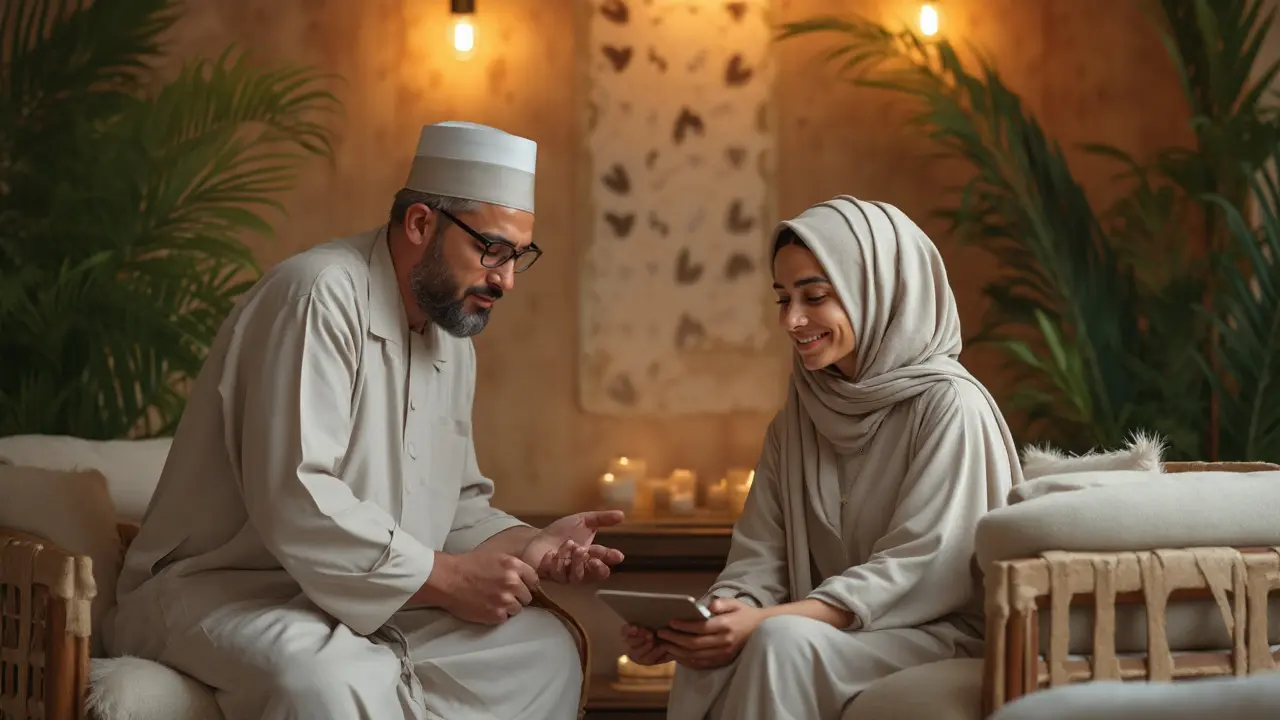
Safety and Ethical Considerations
Choosing Qualified Practitioners/Resources
If you’re hiring someone, check their credentials. Spas in Dubai should display licenses, and therapists need proper training (500+ hours is pretty standard globally). Don’t settle for anything less—your safety comes first! Ask about continuing education or specialties (like prenatal massage or deep tissue) if you have specific needs. At home, learn from trusted sources—books, professional videos, or wellness trainers.
Safety Practices
Good hygiene is a must—clean hands, sanitized tools, and changing linens between clients. Consent means a clear yes, every time. Anything less? Time to stop. Watch for injuries or conditions that need a gentler touch (like varicose veins, pregnancy, or recent surgery). If anything feels iffy—check in or avoid that area entirely.
| Practice | Purpose | Example |
|---|---|---|
| Hand washing | Hygiene | Wash before and after |
| Consent | Respect boundaries | Check comfort before starting |
| Proper draping | Maintain privacy | Cover non-massage areas |
| Clean linens | Prevent skin irritation | Fresh towels for each session |
Setting Boundaries
It’s totally normal to say what’s off-limits—chest, inner thighs, even feet (ticklish, remember?). The receiver decides, not the giver. Couples might have special codes for "pause" or "no-go" spots. Therapists rely on intake forms and ongoing check-ins. Bottom line: boundaries keep everyone safe and respected.
Contraindications or Risks
Not everyone should have a massage at all times. Avoid massage during active infection, open wounds, fever, serious heart conditions, or within the first trimester of pregnancy (unless your provider is specialized in prenatal care). Always ask your doctor if you’re unsure. If any pain, numbness, or dizziness crops up, stop immediately and check in with a medical pro.
Enhancing Your Experience with Male Giving Female Massage
Adding Complementary Practices
Want to amplify relaxation? Combine massage with soothing activities—try meditation, breathwork, or aromatherapy (lavender and chamomile are crowd favorites). Some Dubai spas offer yoga or sound healing right alongside a massage for the full recharge experience.
Collaborative or Solo Engagement
Massages are flexible—book a professional, swap turns with a partner, or take matters into your own hands with self-massage tools. Couples might enjoy learning rituals together through workshops. Solo sessions? Invest in quality oils, a foam roller, or even a simple massage pillow for smaller aches.
Using Tools or Props
Props like hot towels, massage stones, or heated pads deepen relaxation. Foam rollers help with large muscle groups, while handheld massagers can target knots you can’t quite reach. No tool? No problem—a tennis ball in a sock makes a great low-tech massager for your shoulders or back!
Regular Engagement for Benefits
Massage isn’t a one-and-done fix. Like any good thing—exercise, saving money, romance—it pays off with consistency. Monthly sessions maintain muscle health and lower stress in the long run. Even five-minute home massages between partners keep connection and comfort levels high. Try it, tweak it, and remember—practice makes perfect, especially when both sides feel safe and respected.
Finding Resources or Experts for Male Giving Female Massage
Researching Qualified Experts/Resources
Don’t just grab the first deal you see online! Check reviews, ask for proof of training, and look for therapists who specialize in the type of massage you want. Word-of-mouth and reputable wellness centers are gold standards in Dubai. Good professionals welcome questions—they know you care about safety and want the best experience possible.
Online Guides and Communities
Trusted websites—like those run by the American Massage Therapy Association (AMTA), the International Spa Association, or even the World Health Organization (Web source: https://www.who.int)—offer tons of advice and safety info. Online forums and local wellness groups can be great for recommendations, but trust official resources for anything health-related.
Legal or Cultural Considerations
Dubai’s spa laws are clear—licensed therapists, no private massage services in hotel rooms or apartments without permits, and privacy is strictly enforced in professional spaces. Many women in Dubai choose female therapists out of cultural comfort, and spas gladly accommodate. Always ask before booking to avoid misunderstandings. At home, consent and discretion matter, especially when family or visitors are present. When in doubt—ask first!
Resources for Continued Learning
Books (“The Book of Massage” or “Hands-on Healing” are classics), YouTube tutorials from certified trainers, and local workshops all help you level up your massage skills. If you’re committed to learning, consider short professional courses—some Dubai wellness centers even run couples’ massage classes. Curious minds never run out of ways to get better!
FAQ: Common Questions About Male Giving Female Massage
Wondering what others want to know? Here’s the lowdown on the most-asked questions about male giving female massage, straight from real-life curiosity.
What to expect from a male-to-female massage session?
Expect a focus on comfort, respect, and consent. In a professional setting, sessions begin with a quick health check-in, covering your needs and any problem areas. Therapists use draping to protect privacy and check frequently about your comfort and preferences. At home, it’s similar—clear mutual understanding before, during, and after. Most sessions target tension relief with relaxing music, warm lighting, and the receiver only undresses to their comfort level.
What happens during a male giving female massage?
The therapist or partner will ask questions about sore spots, pressure preferences, and specific needs. The receiver lies down (usually on a table or cushion), and areas outside the massage zone are covered with towels. Techniques vary—long strokes, kneading, lighter or deeper pressure based on communication and feedback. It’s always okay to request adjustments, and stopping is always an option. The session ends with gentle strokes, privacy, and usually a few minutes of rest before getting up.
How is male giving female massage different from other techniques?
When done with sensitivity, there’s no technical difference—effective massage depends on knowledge, consent, and respect. Any gender can be an excellent therapist or partner. Some people feel more relaxed with a female therapist due to culture or comfort; others prefer strong hands for deep tissue work, regardless of gender. The real difference? It’s all about the experience, communication, and mutual trust between giver and receiver.
What is the best method for a male to give a female a massage?
Start with gentle techniques like Swedish massage (long, smooth strokes), using quality oil or lotion to avoid dragging on the skin. Focus on high-tension areas—neck, shoulders, back—unless otherwise requested. Keep movements steady and check in often. Don’t rush or use excess force, and remember to adapt technique for individual preferences. A professional course or trusted instructional guide can help build confidence.
Is male-to-female massage suitable for beginners?
Absolutely, as long as both sides agree on boundaries and comfort. Many start with short sessions focused on less-sensitive areas like shoulders or hands. Go slow, use light pressure, and communicate clearly. Professionals are trained to support beginners, too. If you’re new, let your therapist know, or watch short guides to build comfort at home. There’s no shame in starting simple and working up from there!
Why Male Giving Female Massage is Worth Exploring
A Path to Relaxation and Connection
Massage isn’t just about getting knots out—it’s a way to unwind, restore emotional balance, and deepen connection, whether with a partner or a talented therapist. For many in Dubai and around the globe, it’s as essential as hitting the gym or meditating.
Try It Mindfully
Make massage part of your wellness routine, but always choose qualified practitioners and clear communication. Test out short sessions, try different techniques, and tweak the experience until it fits your comfort and preferences. Remember—results differ for everyone, and professional advice is the best option if you have health concerns.
Share Your Journey
Have you tried a male-to-female massage, at home or in a Dubai spa? Share your experience in the comments! Got tips, questions, or rituals to recommend? I’d love to hear them. And don’t forget to follow my blog for more tips on wellness, self-care, and all things spa-inspired!
Some links may be affiliate links, but all recommendations are based on research and quality.


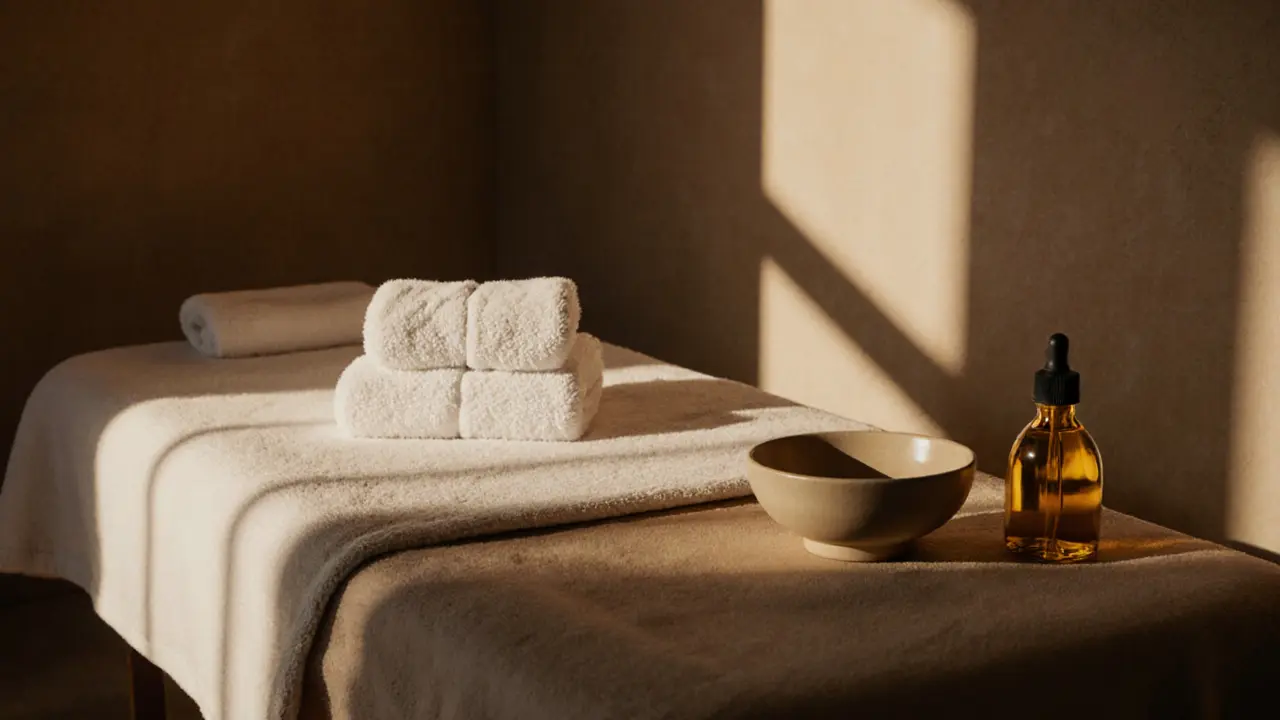

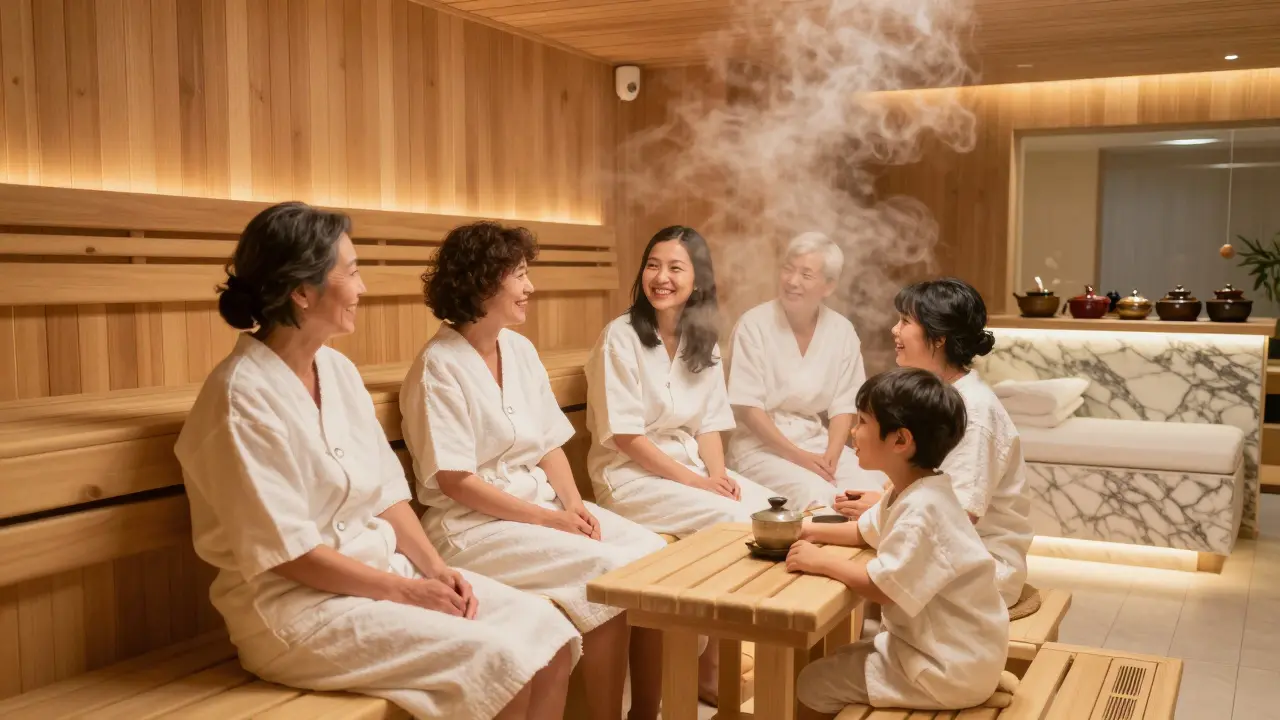

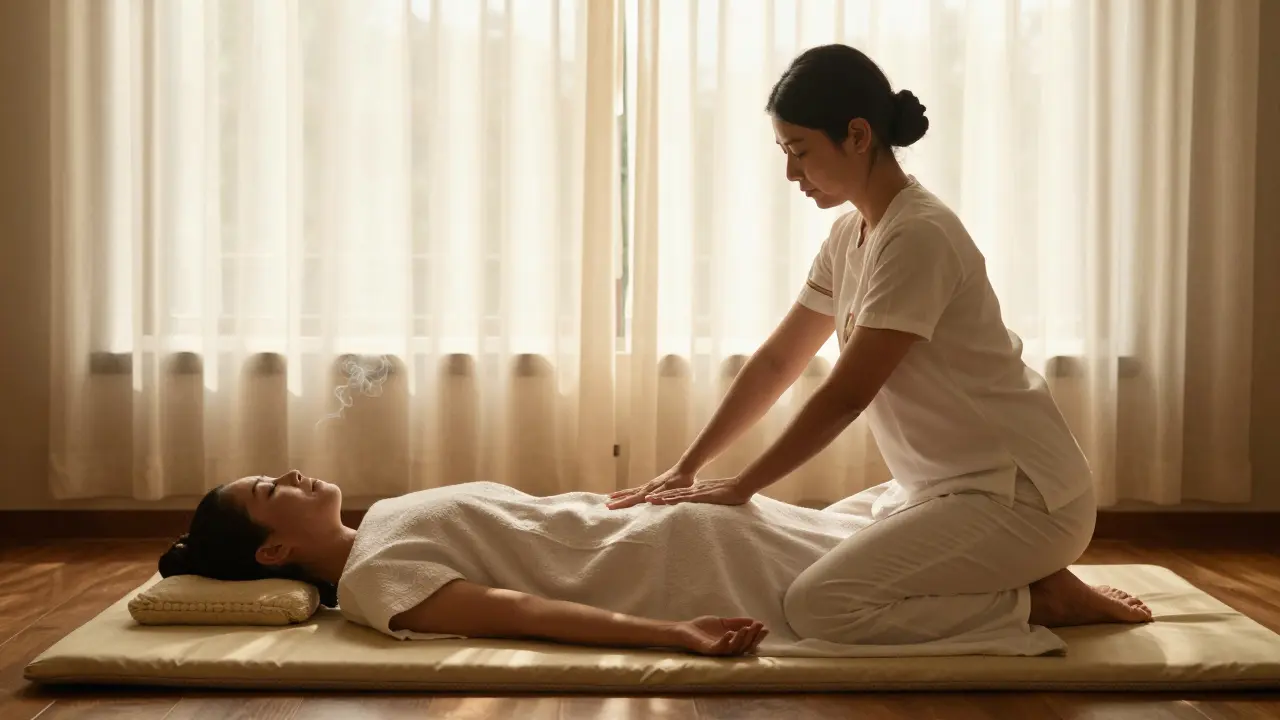
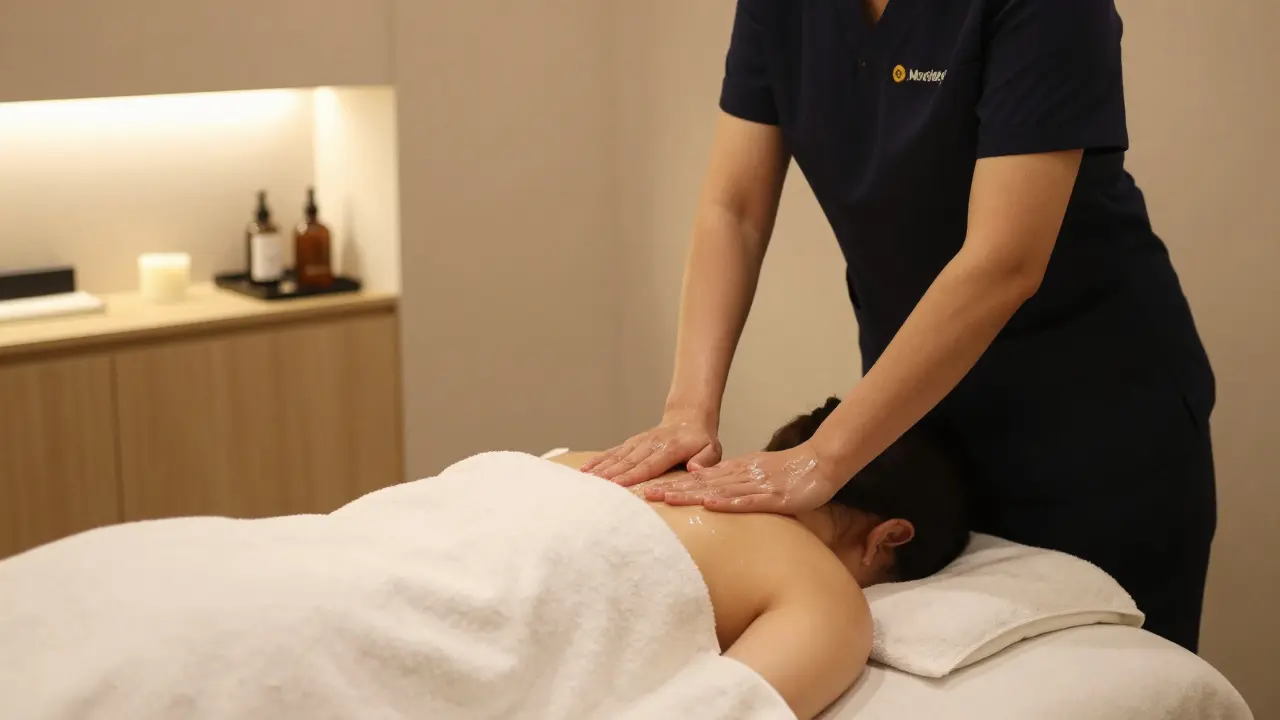
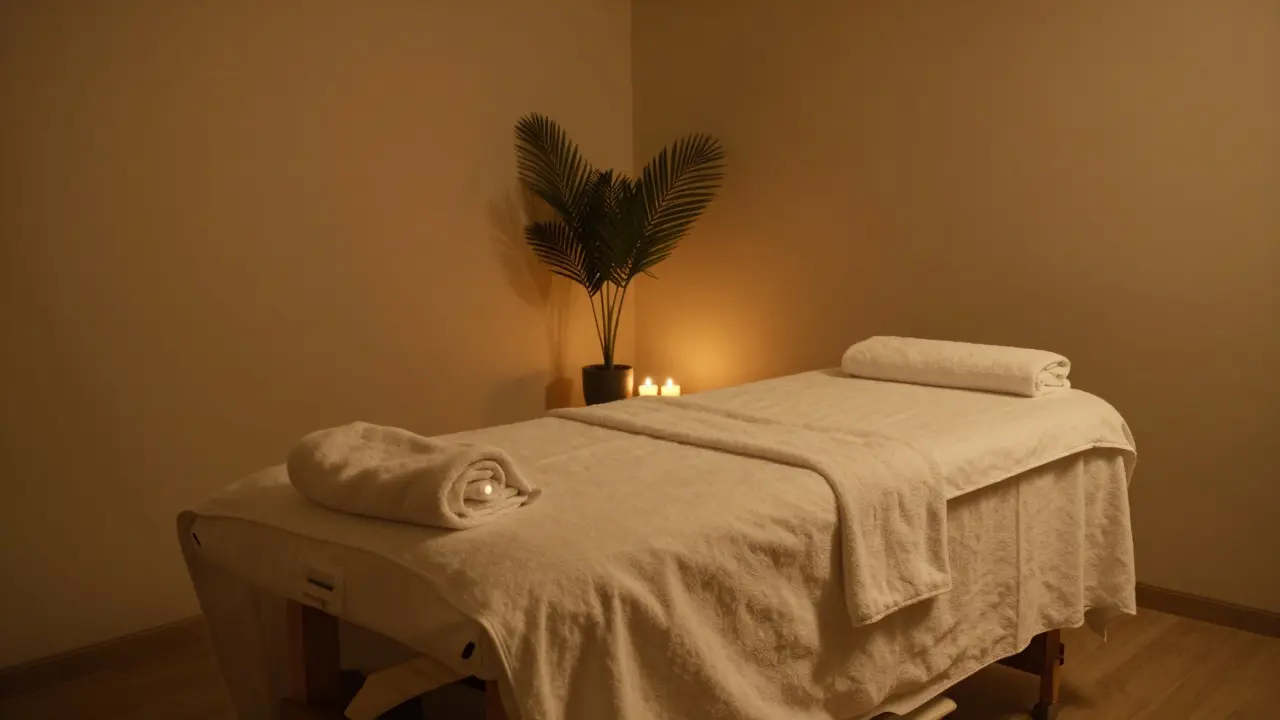
Chris Hogan
August 5, 2025 AT 18:06Oh man, this topic really is a minefield packed with potential faux pas and societal minefields, isn’t it? The dynamics of a male giving a female a massage can quickly spiral into intricate social choreography. You absolutely have to factor in cultural context, professional boundaries, and a dollop of common sense.
Let’s be real, starting with the etiquette: clear communication, consent, and professional conduct are paramount. Without these, what should be a therapeutic session risks turning into an uncomfortable imbroglio.
And the benefits? They’re substantial, but nuanced. A well-delivered massage can alleviate muscle tension, improve circulation, and foster trust between the giver and receiver — provided everything is above board, of course.
In short, this isn't just about hands-on care; it's about navigating a labyrinth of expectations that differ wildly based on location, culture, and individual comfort. The article giving a comprehensive breakdown is essential reading for anyone stepping into this realm!
Michael Thompson
August 6, 2025 AT 21:53Yep, I totally agree with the points above, especially around clear boundaries. It’s crucial that the male giving a female a massage respects personal space and social cues at every step. Before even starting, confirming that the recipient is comfortable and understands what the session entails is key.
Personally, I think transparency is everything here. Whether you’re a professional or just helping a friend out, there’s no room for awkwardness if you establish clear boundaries upfront. And that includes what parts of the body are okay to touch and which aren’t.
Also, maintaining professionalism can’t be overstated. For example, professional masseurs follow a strict code of conduct; even in casual settings, mirroring this approach shows respect and creates a safe space.
And let’s not forget the benefits! Physiologically, massages promote relaxation and reduce stress hormones, which is a win for everyone. So, done right, it’s a beautiful thing.
Shayla O'Neil
August 7, 2025 AT 22:53What I find compelling about this topic is how it ties into philosophical questions about bodily autonomy and trust. When a male offers a massage to a female, it’s not just a physical act but also a profoundly interpersonal exchange.
The etiquette, therefore, transcends simple manners and dips into respect for the other’s agency and comfort. Boundaries must be clearly communicated and honored, or the massage risks becoming invasive or violating.
In addition, cultural variations play an enormous role in influencing perceptions. What’s considered acceptable in one culture may be taboo in another. So, context is critical.
On the upside, when done right, massages can foster relaxation, healing, and connection, benefiting both parties emotionally and physically. It’s a beautiful manifestation of consensual care and attentiveness.
mark roberts
August 9, 2025 AT 02:40Ah, the cultural aspects here are so important! Having traveled and worked internationally, I’ve seen firsthand how massage practices vary. In some cultures, mixed-gender massages are normalized and carry no stigma, while in others, it’s strictly taboo.
This means that the male masseur must be incredibly sensitive to the cultural background of his female client. Before even beginning, having a conversation about comfort zones and cultural expectations can prevent awkward or inappropriate situations.
What’s more, the benefits of massage are universally acknowledged—stress relief, improved circulation, easing muscular pain—but gaining trust is the first step.
Always err on the side of caution, respect, and open communication. That way, everyone walks away feeling valued and comfortable.
Sandie Corr
August 10, 2025 AT 06:26This content really piques my curiosity—how do we balance professional technique and personal comfort? I wonder if there are standardized guidelines or training resources specifically addressing the gendered dynamics of massage therapy.
It seems like a fascinating mix of physiological knowledge, empathy training, and etiquette teaching all rolled into one.
Also, what's the role of informed consent specifically in massage? It’s not just a single yes or no but ongoing awareness and sensitivity to boundaries that could shift during the session.
I would love to hear more about how professionals are educated to handle these nuanced interactions and how they incorporate cultural competency into practice.
😊Natasha Ray
August 11, 2025 AT 10:13Honestly, I’m a bit skeptical about males giving females massages outside strict professional settings. Boundaries are so easily crossed, and it often feels like an opening for abuse or manipulation.
While I acknowledge the benefits, shouldn’t we be more wary about potential hidden agendas or power imbalances? It’s just too easy for well-intentioned acts to morph into something uncomfortable or exploitative.
I’ve seen stories where this kind of situation spirals into harassment, so emphasizing strict rules and perhaps limiting sessions to professionally trained individuals seems wise.
It’s not paranoia, just realistic caution.
Stephen Bodio
August 12, 2025 AT 14:00I get your concerns but I think they can be addressed well with transparency and professionalism. Men giving women massages isn’t inherently problematic if clear, consensual boundaries are set from the get-go.
Being attentive to verbal and nonverbal cues during the session is also vital. If the client feels uncomfortable at any point, the masseur should respectfully pause or stop. That ongoing communication is key.
This respectful approach not only helps the client relax but can build trust and deliver genuine health benefits, like easing chronic pain or stress.
We shouldn’t let fear overshadow the positive aspects of care and support.
Hallam Bailie
August 13, 2025 AT 17:46Yeah, totally! 😊 I think it's really all about vibe and respect. If the guy's got the right mindset and listens well, it can be a really chill and helpful experience for the lady getting the massage.
It’s also super important to know when to stop or adjust the pressure based on the person’s feedback. That’s just basic respect, no matter the setting.
Setting clear expectations ahead of time helps too, so there’s no weirdness or surprises. I honestly don’t think gender matters as much as the attitude and boundaries in place.
And hey, massages are awesome stress-busters and can help with so many aches. So yeah, get the basics right, and it’s all good! 👍
Anil Sharma
August 14, 2025 AT 21:33Really impressed by these perspectives! Just wanna add that sometimes, even with all the etiquette, culture, and benefits thought out, there can still be hesitant feelings from either side, which is normal.
It’s important for men giving massages to be patient and not rush, letting the female feel safe and in control. This helps build a positive experience for both without pressure or awkwardness.
Also, different body areas have different sensitivity levels, so starting with less intimate zones and gradually adjusting as permitted might make the whole thing smoother.
Interesting topic for sure, and I think open dialogue and education like this post promotes can help blur the lines of discomfort.
Jack Gaines
August 16, 2025 AT 01:20Short and sweet: yeah, a male can give a female a massage if he respects boundaries and is professional about it. Straight up communication before and during is key.
No need to overthink culturally or socially; just be clear and honest. Ask questions, listen carefully, and check in often.
The benefits? Stress relief, easing muscle tension, and just taking a moment to unwind. It’s great for health and well-being.
So basically, keep it respectful, keep it clear, and keep it thoughtful.